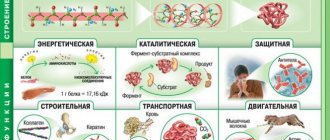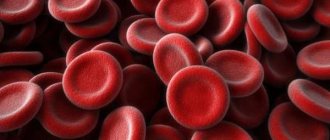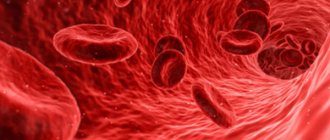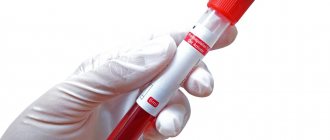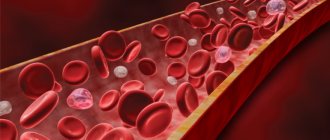What is urea and its functions in the body
Urea is a biochemical substance that is formed at the final stage of protein breakdown. The reasons for the increase in its concentration in the blood serum is a decrease in the filtration function of the kidneys. The higher the concentration of residual urea compounds, the more serious the disease of the excretory system.
An excessive level of the product of the final stage of protein breakdown indicates a critical condition of the kidneys and the initial stage of failure in their work. In a person who does not have problems with protein metabolism, urea is removed along with urine, entering the bloodstream in small quantities.
Urea formula
It is necessary to distinguish between urea and the component of urine - uric acid, since the mechanism of their formation is associated with completely different metabolic processes.
Uric acid is synthesized after the breakdown of high-molecular nucleic acid compounds, and the nitrogen-containing substance urea is the result of the entire protein metabolism as a whole. This substance does not provide any benefit to the body and must be eliminated from the blood serum as soon as possible.
How and under what conditions is urea produced?
Urea in the blood is increased (the causes of the alarming symptom may be interconnected with a person’s lifestyle) only in cases where there is a daily consumption of food rich in proteins, but at the same time there is a decreased performance of the kidneys.
The process of producing a biochemical compound occurs as follows:
- Food products containing proteins of plant or animal origin enter the digestive tract.
- Under the influence of enzymes and gastric juice, food nutrients are broken down and absorbed.
- In the liver tissue, the stage of protein metabolism is completed, as a result of which nitrogen-containing products are converted into urea.
- The biochemical substance enters the bloodstream and then passes the filtration barrier of the kidneys.
- The organs of the excretory system, which fully perform their functions, remove urea from the body along with urine.
Urea contains at least 46% nitrogen. People who do not consume animal proteins for a long time, or who deliberately limit themselves to eating foods containing large amounts of protein, have low urea levels. Moreover, this result is characteristic of both the composition of blood serum and urine.
Normal blood urea table
In the bloodstream of children, adult men and women of young and mature age, as well as elderly people, a small concentration of breakdown products of nitrogen-containing substances is allowed. The table below shows urea standards that are considered optimal and do not pose a threat to human health and life.
| Age | Normal indicators for men and women (unit of measurement – mmol per 1 liter of blood serum |
| Baby 7 days after birth | From 1.1 to 8.9 |
| Children aged from 7 days to 1 year | From 1.4 to 6.8 |
| Child from 1 year to 18 years | From 1.8 to 6.4 |
| From 18 to 60 years old | From 2.1 to 7.1 |
| From 60 to 90 years | From 2.9 to 8.2 |
| Elderly people over 90 years old | From 3.6 to 11.1 |
Any deviation from the optimal indicators, which are displayed in the table above, indicates a chronic or acute phase of the development of kidney, liver, genitourinary or digestive system disease. Further establishment of the cause of the painful condition requires a comprehensive diagnosis.
Symptoms of elevated blood urea levels
Urea in the blood is increased (the reasons for its excessive formation may be associated with the development of an acute form of renal failure) in people who have severe diseases of the genitourinary and excretory systems. The first signs of a high concentration of urea are a rapid deterioration in the patient’s general well-being, as well as an increase in the intoxicating effect.
The following symptoms appear:
- sharp jumps in blood pressure towards its increase, although the person has not previously suffered from cardiovascular diseases;
- frequent urge to urinate, but at the same time the release of completely transparent urine without the characteristic shade of wheat straw (after this, the outflow of urine rapidly decreases, and its portions become scarcer each time);
- the appearance of edema, which is localized in the tissues of the lower extremities, around the eyes, fingers and palms of the hands;
- an increase in the level of creatinine in the blood serum (this substance is also the result of complex protein metabolism, so the simultaneous increase in urea levels coincides with an increase in creatinine);
- lack of appetite, aversion to food;
- decreased ability to work, physical weakness, dizziness;
- attacks of severe headache, the appearance of which is associated with severe intoxication of the body;
- excess in the blood serum of other toxic compounds that accumulate together with urea during the breakdown of nitrogen-containing products - ammonia, peptides, microglobulin, cyanate, phenolic substances (are carcinogens), acetone, oxalic acid;
- vomiting;
- stool disorder, which is expressed in the form of liquid diarrhea;
- the development of hyperkalemia, which entails heart rhythm disturbances.
Signs of a critically high level of urea in the blood serum can be detected independently.
For example, in addition to the above symptoms, it is necessary to pay special attention to the surface of the skin. People who have urea in their blood have epithelial tissues covered with nitrogen frost. These are small crystals of mineral salts that were not excreted by the kidneys along with urine.
Folk remedies
You can also reduce urea in the blood using folk remedies. Unfortunately, modern people underestimate medicine of this level, forgetting that the entire pharmaceutical industry of the 21st century is based on natural ingredients, since they are an integral part of all manufactured products.
Often, such drugs become an ideal addition to the main treatment of excess urea, significantly increasing the likelihood of a speedy recovery for patients with azotemia. In order to eliminate the incompatibility of all medicinal substances included in the treatment plan, it is imperative to coordinate the use of traditional medicine recipes with the treating doctor.
Various types of decoctions have proven to be good healers in the fight against urea retention, each of which is used for deviations of a certain spectrum. Here are some of the most effective natural remedies to combat excess urea:
| Ingredients | Cooking method | Application | Curable ailments |
| Shredded birch leaves | 2 tablespoons of raw materials are poured with 2-3 cups of boiling water and kept on the fire for a little (8-12 minutes) | 2–3 times a day, a third of a glass | Stagnation of urine |
| Mint, calendula, lemon balm (1:1:1) | Add a liter of water to a container with 6–8 tablespoons of the mixture and bring to a boil | ½ glass per day for 2–3 months | Kidney failure |
| Black currant leaves and roots of wheatgrass, dandelion and spool (1 spoon each) | Pour in about a liter of liquid and simmer the mixture over low heat for several minutes | 30–40 minutes before meals three times a day | Urolithiasis, cholecystitis |
| Whole bulbs | Wash 2-3 small heads with husks thoroughly and put them in a liter of water, cook until the vegetable is softened. Strain | A tablespoon three times a day | Kidney stone disease |
| Liquorice root | Boil 2 tablespoons of the crushed plant in 1 liter of water for about 2–4 minutes, then cool | 80–90 ml (about 1/3 cup) before each meal | Urolithiasis, pyelonephritis |
| Rice | Pour 3-4 heaped tablespoons of grains into 800 ml of boiling water and continue cooking for up to half an hour, remembering to stir the mixture. After cooling, strain | A quarter glass every 5–6 hours | Acute poisoning |
| Oak bark | Pour 500–600 ml of water into 5–6 tablespoons of raw material and keep on low heat for 15–20 minutes. Strain | 2 tablespoons four times a day |
Special infusions are no less effective in reducing the concentration of urea in the blood:
| Ingredients | Infusion time (each recipe assumes 1 liter of water) | Application | Treatable diseases |
| Bearberry herb (3–4 tablespoons) | Up to 5 hours | Before meals, 1 spoon | Pyelonephritis, microlithiasis (sand formation in the kidneys), pyelitis, cystitis |
| Dried black currant leaves (up to 10 pieces) | 3–4 hours | A glass twice a day | Neurosis, nephritis, stagnation of urine |
| Chicory root, crushed (6–8 teaspoons) | 2–3 hours | Three times a day, 2 spoons before meals | Kidney stone disease |
| Dried crushed lingonberry leaves (3–4 tablespoons) | 20–30 minutes | A spoonful every hour | Cystitis, kidney stones |
| Parsley and burdock root (1 cup) | 20–24 hours (away from sunlight) | 100–120 ml each time before meals | Kidney failure |
Teas with chamomile, rose hips, valerian, bergamot, hops, motherwort, lemon balm, lavender and thyme can lower the level of urea in the body. Special herbal infusions intended for bathing are considered very useful in reducing carbamide:
- string + oregano + nettle + violet (up to 3 times a week);
- sage + birch leaves + knotweed (alternate every other day);
- oat straw + pine branches + hay dust (up to 3 times a week).
Bathing in medicinal baths that prevent the formation of excess urea should not exceed 20 minutes. The water temperature should not exceed 34°C.
Complications of acute renal failure (including oversaturation of the blood with urea) can be overcome by regularly consuming pomegranate juice or grains of the tropical fruit
Hypertension (long-term high blood pressure) is considered to pose a risk to the kidneys in most cases. This unpleasant symptom often accompanies glomerulonephritis, polycystic disease and paranephritis, causing severe damage to the body. Metabolism is disrupted, and the amount of urea increases sharply.
A syrup consisting of liquid honey and lingonberry juice (1:7) can stabilize the pressure in the vessels, thereby regulating urea. Take the healing elixir three times a day, 1/3 cup.
Causes of increased urea in the blood
Urea in the blood is elevated (the causes of the pathological symptom in 85% of cases are associated with the presence of a current disease) in people who suffer from concomitant diseases of the kidneys or other organs of the excretory system.
Frequent stress is a possible cause of high urea levels in the blood
The following reasons for the increase in urea concentration in the bloodstream are identified:
- a side effect of prolonged use of medications such as Lasix, corticosteroids, cephalosporin antibiotics, Tetracycline, Eutirox, steroid hormones, androgen-based sports nutrition;
- eating large amounts of protein foods of animal or plant origin;
- long-term fasting, when due to a systematic deficiency of proteins, as well as other nutrients, protein metabolism is disrupted and the performance of the heart, kidneys and liver decreases;
- intense physical activity, labor associated with daily movement of heavy objects;
- frequent stress, nervous strain, psycho-emotional breakdowns of various etiologies;
- renal failure, which is in the acute phase of development (at the initial stage of the disease there is a sharp surge in the concentration of urea, and then creatinine, the levels of which reach 10 mmol per 1 liter of serum and blood);
- prostate cancer;
- blockage of the urinary tract of the kidneys by stones or tumors that make the natural outflow of urine impossible;
- inflammatory kidney diseases – glomerulonephritis, as well as pyelonephritis;
- complication of existing heart failure or sudden myocardial infarction;
- pernicious anemia;
- thrombosis of the main vessels feeding the kidney tissue, which ultimately led to disruption of their blood supply;
- prolonged thirst and failure to receive into the body a sufficient volume of fluid necessary for the functioning of the excretory system and the removal of metabolic products along with urine;
- renal failure, which has become chronic;
- hemolytic type jaundice;
- thermal or chemical bodies covering more than 10% of the skin;
- severe infections that affect the gastrointestinal tract - cholera, bacterial dysentery, typhoid fever;
- obstruction of food through the intestines, the appearance of blood clots in the veins of this organ (in this case, the filtration function of the kidneys remains normal, but the accumulation of nitrogen-containing substances in the blood serum is due to a violation of protein metabolism).
Timely detection of the cause that provoked an increase in the level of urea in the bloodstream is considered a prerequisite for successful treatment and restoration of the functionality of the entire body. Without treatment of the underlying disease, it is impossible to achieve stable remission and complete cleansing of blood serum from mineral impurities.
Main indications for blood tests
Uric acid tests reveal the function of the kidneys as a filter. Biochemistry based on markers of urea and creatinine in the blood is prescribed, as a rule, if diseases of the human genitourinary system or one of its organs are suspected. In human muscle tissue there is a large amount of protein, for the processing of which uric acid is responsible, and when the level rises, this means a malfunction of the muscular system.
Elevated urea in the blood is perceived by doctors as an indicator of liver failure and liver disease. Thus, a biochemical analysis of the blood being tested is a complex procedure for identifying a number of diseases. The urea content in urine is examined in conjunction with taking the patient’s blood.
More on the topic: What causes redness around the urethra in men?
Indications for blood urea testing
Urea in the blood is increased (the reasons for the increase in the concentration of the protein breakdown product are determined by the results of a diagnostic examination of the body) in patients with diseases of the gastrointestinal tract, organs of the excretory system or disorders of protein metabolism.
A study of blood serum for the concentration of urea in it is indicated if the patient has the following complaints:
- frequent urination with discoloration of urine, or cessation of daily diuresis;
- headache, nausea, vomiting;
- arrhythmia, asthma attacks;
- the appearance of salt discharge on the surface of the skin (most often this symptom of high urea levels is localized on the epithelial tissues of the head);
- loss of appetite;
- loose stools without signs of intestinal infection or food poisoning;
- swelling of the legs, soft tissues around the eyes and the entire facial disc as a whole;
- the smell of acetone or urine from the oral cavity (in conditions of a critically high level of urea in the blood, the patient’s skin begins to emit a characteristic odor of ammonia).
The initial appointment and diagnosis of the patient is carried out by a general practitioner, nephrologist, and hematologist. The choice of a specialized specialist depends on the type of disease that caused pathological symptoms and an increase in urea concentration. If the patient has not yet been diagnosed, then first of all it is necessary to seek advice from a general practitioner.
Symptoms and treatment of pathology
The first sign of increased urea in the blood is considered to be ordinary fatigue. The patient quickly gets tired and begins to have regular headaches.
This is a consequence of poisoning the body with ammonia, acetone and other harmful substances. As a rule, no one pays attention to such symptoms at first, attributing everything to hard work or vitamin deficiency.
If you do not reduce the level of urea in the blood, then in the future the patient begins to suffer from digestive disorders. This is manifested by abdominal pain, diarrhea, nausea and vomiting.
In addition to disturbances in the functioning of the gastrointestinal tract, problems with vision, worsening blood clotting, a decrease in the amount of urine during bowel movements, and increased sweating are added.
The patient experiences dry skin, brittle hair, and in some cases develops mental disorders.
In the future, a white coating may appear on the skin - urea leaves the body with sweat and crystallizes. This phenomenon is called “uremic frost.”
If at this stage the urea level is not reduced with the help of hemodialysis, then the patient will develop blood poisoning and the person will fall into a coma. As a rule, the probability of saving the patient at this stage is almost zero.
READ Hemoglobin abnormalities in adults
If the pathology is advanced, it is possible to reduce the urea level to normal values only through hemodialysis. This is an operation, the main essence of which is the extrarenal purification of the patient’s blood using special devices.
At an early stage of pathology, you can get rid of toxins with the help of sorbents and antioxidants.
Treatment also involves taking medications that remove urea from the body. The medications Blemaren, Benzbromarone, and Etamide help reduce the concentration of the substance in the blood.
It should be noted that it is not enough to reduce the level of urea; you need to fight the main cause that caused the pathology.
To make an accurate diagnosis, additional examinations may be prescribed, after which treatment is prescribed.
The causes of the pathology can be quite serious and threatening to human health, so in no case should you try to cure yourself.
Taking both medications and folk remedies should be under the supervision of the attending physician and with his approval.
How is urea in the blood determined?
In order to determine the concentration of urea in the blood serum, it is necessary to undergo a preliminary consultation with a general practitioner.
After listening to the patient’s current complaints and determining the symptoms characteristic of high urea levels, the doctor prescribes the following tests and laboratory tests:
- collection of venous blood for biochemical analysis and determination of the concentration of urea, creatinine, residual nitrogen compounds (non-protein), total protein and bilirubin;
- Ultrasound of the kidneys to promptly detect the possible presence of foreign tumors, blockage of ducts and stones that disrupt the stable functioning of the excretory organ;
- submitting urine for biochemical testing for urea and protein levels;
- collection of urine with further analysis using the Nechiporenko method in order to promptly determine the inflammatory process in the tissues of the kidneys and the urinary system as a whole;
- daily diuresis (in this case, urine is collected for 24 hours, and the attending physician analyzes the total volume of urine excreted over a specified period of time);
- Ultrasound of the liver to identify diseases of this organ (cirrhosis, hepatitis, cancer, which affect the breakdown of nitrogen-containing products and the production of urea);
- gastroscopy of the stomach and endoscopic examination of the intestines, if there are concomitant gastrointestinal pathologies that exclude normal digestion and absorption of protein foods.
The main analysis that allows us to establish the real level of urea in the blood serum is a biochemical study of venous blood. Other diagnostic methods are considered auxiliary and are also aimed at identifying the disease that provokes an increase in the concentration of a nitrogenous compound in the blood.
Preparing and performing a blood urea test
To obtain the most reliable data on the study of blood serum for urea levels, it is necessary to follow the rules for preparing for the analysis.
The patient is recommended to do the following:
- 3 days before collecting biological material, exclude meat dishes, fried, pickled, smoked, and too fatty foods from the diet;
- 48 hours before the test, do not drink alcohol, do not visit baths and saunas;
- the last meal should take place no later than 8-12 hours before donating venous blood;
- dinner, on the eve of collecting biological material, should be light, consist of cereal porridge, vegetable salad (you cannot overeat);
- if the patient uses tobacco products, the last cigarette should be smoked no later than 1 hour before visiting the laboratory;
- 24 hours before the analysis, you should not engage in sports, expose your body to heavy physical activity, or expose your nervous system to psycho-emotional stress;
- blood from a vein is donated on an empty stomach during the period from 07-00 to 09-00;
- before entering the manipulation room, you need to rest and restore your breathing;
- If you are taking any medications, you should inform your doctor about this, since their active components can affect the breakdown of nitrogen-containing products.
Blood is drawn by a laboratory technician at the site of the analysis. Biological material is taken from the ulnar vein.
For research and obtaining the most accurate results, 2 to 5 ml of blood is enough. In a public hospital, medical services are provided free of charge. In a private clinic, you will have to pay about 850 rubles for a urea test. The average duration of a laboratory test is from 3 to 5 hours.
Interpretation of blood urea test results
Interpretation of the results of a biochemical study of blood serum for urea levels is carried out taking into account the indicators that are displayed in the table above. If the concentration of a nitrogen-containing substance deviates from the established norm, one can judge the possible development of the following pathologies.
| Increased performance | Reduced performance |
| Renal failure in acute or chronic form. | Cirrhosis, as well as other liver diseases, leading to total destruction of its tissues and a decrease in synthetic function. |
| Ureteral stricture, prostate enlargement in men, urolithiasis, urinary tract obstruction. | Overhydration, protein malnutrition, or malabsorption |
These diseases, more often than any other disease, cause a sudden increase or decrease in the concentration of a nitrogen-containing substance in the blood. If urea readings deviate from the established norm, immediately upon completion of the laboratory report, it is necessary to undergo an examination for the presence of the above pathologies.
Reason for downgrade
In a healthy person, the synthesis of nitrogenous bases is determined by the nature of nutrition. But often accidentally discovered deviations in tests make it possible to timely identify serious diseases at an early stage.
Physiological
Low urea in the blood can also be observed in the following functional conditions, that is, treatment does not require:
- insufficient consumption of protein foods;
- vegetarianism;
- inadequate diets associated with prolonged fasting;
- in children of the first years of life (active tissue growth);
Low urea in the blood during pregnancy (especially in the first and third trimesters) is not a cause for concern if all other test results are normal. The changes are due to an increase in total blood volume and high energy costs, which is necessary for the proper development of the fetus.
Also, a temporary change in the indicator occurs after intravenous administration of large volumes of medicinal solutions or blood purification procedures (hemodialysis, plasmapheresis).
Pathological
Blood urea is low in the following diseases:
- acute intoxication (poisoning with phosphorus, arsenic compounds);
- acromegaly (a disease in which certain parts of the human body become pathologically enlarged);
- acute or chronic kidney damage;
- malabsorption syndrome (insufficient absorption of substances in the intestine);
- severe liver damage: viral hepatitis, cirrhosis, cancer;
- organ transplantation;
- hepatic encephalopathy (up to the development of coma);
- congenital defects of enzyme systems.
Impaired liver and kidney function also occurs when long-term treatment with certain medications (hormones, antibiotics, chemotherapy) is required.
At what level of urea in the blood should you consult a doctor?
Any excess of the norm of a nitrogen compound in the blood, or a decrease in its values, should be a motivation to seek advice from a general practitioner or nephrologist.
Specialists of this profile will conduct an initial examination of the patient and will also be able to prescribe a set of tests. Their results will make it possible to establish the true cause of changes in the biochemical composition of the blood and disruption of the process of breakdown of nitrogen-containing products with their further removal outside the body.
How to bring the urea level in the blood back to normal
Normalization of the level of this nitrogen-containing substance is carried out through the use of medications, as well as through other methods of artificial blood purification from toxic compounds.
Medications
To reduce the concentration of urea in the blood serum, sorbent drugs are used, which allow the removal of toxins in a short period of time, namely:
- Polysorb is a drug that is taken orally in the form of a suspension of 1 tbsp. l. 3-4 times a day 1 hour before meals, pre-mixed in a glass of still water (course of administration - 10-15 days, and the cost of the medication is 240 rubles);
- Atoxil is a universal remedy for eliminating signs of intoxication and cleansing the body of toxic substances, which is taken 1-2 sachets, pre-dissolved in 200 ml of warm water (therapy is symptomatic as the level of urea increases, the price of the sorbent is 150 rubles per jar) ;
- Enterosgel paste is an absorbent drug that has a jelly-like mass, taken 1 tbsp. l. 3 times a day 1.5-2 hours before meals, or after a similar time, but after a meal (the course of treatment ranges from 7 to 14 days, and the cost of the drug is 230 rubles);
- Silix is a powder for preparing an oral suspension, the daily dosage is 12 g, the sorbent is dissolved in 250 ml of boiled water with a course of therapy of 14 days (the price of the medicine is 190 rubles).
The above drugs are effective in the initial stage of disease of the liver, kidneys or digestive system, which has caused an increase in urea. If the disease has already reached the stage of uremia, or the patient suffers from acute or chronic renal failure, then methods of hardware blood purification in the form of hemodialysis should be used.
Traditional medicine for relief
You can remove urea from the body using traditional medicine recipes. Experts recommend drinking herbal infusions and herbal mixtures from various beneficial plants, including St. John's wort and cornflower flowers, rosehip leaves and black currants, elderberry and juniper. Taking drinks according to the recommendations of traditional medicine should be with the consent of the attending physician and begin with small doses. Based on the medical history, the doctor can select the necessary plants and herbs, check the patient for allergies to the components of herbal preparations, and also recommend the necessary dosage and duration of use.
More on the topic: What pathologies can a change in the color of urine indicate?
One of the popular recipes is bearberry leaves, two large spoons of which are cooked in a water bath in a glass of water. The mixture is boiled for 15 minutes over low heat, then the sediment is discarded and two large spoons are taken half an hour or an hour before meals.
The effectiveness of licorice root has been proven, which you need two large spoons in dry and crushed form per glass of boiling water. The infusion sits on low heat for 10 minutes at a low boil, sits in a dark place for 8 hours, if brewed in the evening, then until the morning. Recommended dosage is 0.1 liter three times a day.
Traditional methods
The increase in the level of nitrogen-containing substances in the blood must be stopped exclusively by medications or other methods of official medicine. Taking decoctions, teas and tinctures prepared on the basis of medicinal herbs will not bring a positive effect, and in some cases may even cause a deterioration in the patient’s well-being.
In addition, the transition of the pathology to the stage of uremia with the further onset of toxic coma cannot be ruled out.
Other methods
A critical increase in the level of urea in the blood serum requires urgent removal of the toxic compound from the body. In this case, sorbent drugs are ineffective, since they are not able to cope with a large volume of nitrogen-containing substances.
Patients with high levels of urea in the blood or signs of uremia are advised to undergo hemodialysis using an artificial kidney machine. The patient is admitted to the inpatient nephrology department or dialysis center. The blood purification procedure is carried out by qualified medical personnel.
The patient is placed in a special chair-couch, and a medical device is connected to his circulatory system, which removes urea and other toxic compounds using a bicarbonate or acetate solution. The hemodialysis procedure itself is performed under completely sterile conditions using disposable consumables.
Patients who have accumulated nitrogen-containing substances due to acute or chronic renal failure are forced to undergo blood dialysis on an ongoing basis from 1 to 3 times a week. In case of temporary dysfunction of the liver and kidneys, which causes an increase in urea concentration, hemodialysis can become a one-time procedure to restore the biochemical composition of the blood.
How is excess urea in the body treated?
Doctors, first of all, normalize nutrition, which should become balanced and comprehensive. Products are selected to reduce the substance in the blood and prevent its levels from increasing. Nutritionists compile lists of foods, some of which are allowed, while others are strictly prohibited. In addition to nutrition, the patient should take at least 2 liters of water per day, preferring non-carbonated mineral water.
Experts do not recommend reducing the calorie content of your daily diet, as this may worsen the situation. Meals must be small, at least 4-5 times a day. Once every 7 or 10 days it is important to do a fasting day.
List of approved products
With high urea levels, the patient is allowed a sufficient amount of food so as not to feel hungry and not suffer from a monotonous diet. From all these products you can prepare various dishes that form the basis of your diet.
More on the topic: What causes casts to appear in urine?
Allowed:
- eggs, low-fat dairy products;
- seafood and low-fat fish, up to 8% fat content;
- lean meat, preferably white. rabbit, turkey or chicken;
- fruits and fresh vegetables that can be eaten without restrictions;
- A little olive and sunflower oil is allowed;
- cereals and durum pasta, but no more than a couple times a week;
- mousses, marmalade, jam and jelly (exclusively homemade);
- Coffee and tea should not be strong; it is better to drink infusions of herbs and herbal teas.
Prohibited Products
Strictly prohibited:
- cauliflower in any form;
- fatty fish and meat, broths in which they were cooked;
- sorrel;
- sausages and sausages of industrial production;
- dishes high in salt, smoked and fatty foods;
- any canned food, fish and meat;
- alcohol of any strength and carbonated liquids;
- strong tea and coffee;
- mushrooms;
- ketchups, sauces, mayonnaise and spices.
Possible complications
Excessive concentrations of nitrogen-containing compounds found in the blood must be removed as soon as possible.
The absence of medication or other therapy can lead to the development of the following complications:
- severe form of uremia, which involves the accumulation of urea to critical levels and the onset of coma;
- general intoxication of the body;
- development of heart failure;
- the occurrence of a hypertensive crisis;
- cardiac ischemia;
- hepatitis or cirrhosis of the liver;
- lifelong dependence on an artificial kidney machine with the need to undergo dialysis blood purification at least once a week;
- the onset of death.
The reasons for the increase in urea in the blood serum are established in the first 1-2 days from the moment the patient seeks help from a doctor.
In this case, you can count on emergency measures aimed at reducing the level of nitrogen-containing substances without significantly disrupting metabolic processes in the body. In general, a violation of normal urea levels in the blood serum is a clear symptom of severe diseases of internal organs, or systemic dysfunction of kidney and liver tissues.
Emergency measures to reduce blood urea levels
Emergency treatment of an acute condition associated with an increase in urea levels in the blood is aimed at reducing the symptoms of intoxication of the body. For this purpose the following can be used:
- gastric lavage and enemas,
- intravenous infusion therapy,
- bloodletting (up to 400 milliliters of blood).
In this case, symptomatic treatment is also used - the administration of strophanthin (in the presence of heart failure), sodium bromide (for skin symptoms), calcium chloride (in the presence of seizures), etc.
If the measures taken are ineffective and renal failure develops, hemodialysis is indicated, and in case of severe kidney damage, organ transplantation is indicated.
Plisov Vladimir, doctor, medical observer
23, total, today
( 42 votes, average: 4.74 out of 5)
Elevated leukocytes in the blood of an adult: what does this mean?
Elevated leukocytes in a child’s blood: what does this mean?


